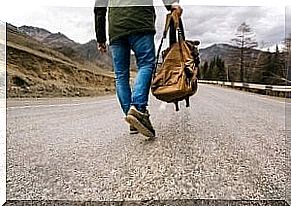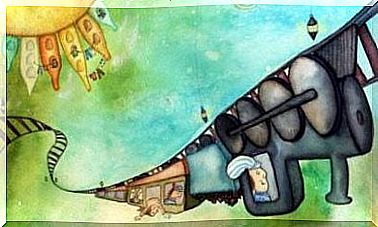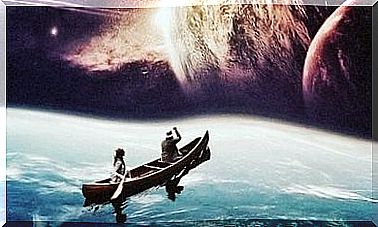The 21st Century Nomads: Who Are They?

Can you imagine moving from one place to another without completely settling down? Nomadic communities used to do this and some people still live that way.
It is only becoming increasingly difficult for them, for example due to factors such as industrialization. However, these changes have created new groups of people who are living like the nomads of the 21st century.
So, what is the difference between these nomads and the earlier nomads? The new nomads or 21st century nomads do not usually live this lifestyle as a community. Rather, it is a personal or family situation resulting from certain factors.
How do they live? Wat are they doing? What inspires them to choose such a lifestyle? Let’s take a look at the curious facts about these adventurers.
Types of 21st Century Nomads
There are different types of 21st century nomads depending on their situation and the reason why they decided to live such a lifestyle.

Nomads by culture or tradition
These are the communities whose tradition, practices and beliefs make them nomads. One could say that they are the “classic” type of nomad . This category also includes stationary nomads, who move to different places depending on the season.
The number of “classic” nomadic communities has declined due to industrialization, the exploitation of certain natural resources that they can no longer use, and the laws that force them to stay in one place. So these nomadic groups have had to adapt to these changes.
However, there are still about 40 million nomads with traditional backgrounds. They are located in countries like Chile, Colombia, Venezuela, Mexico, Spain, Spain, the Philippines, Kenya, and so on.
Nomads of your choice
These nomads have a desire to get to know new places and that’s why they do it non-stop: they go from one place to another to explore it, but they don’t have a specific abode. They like to travel around, meet new places and people, learn…
There are a million reasons why people do this, but they all have something in common: they want to break free from their routine and embark on a new adventure. The way they travel may not be exactly the same as “classic” nomads, but at least temporarily. Constantly moving is a lifestyle for them.
This category also includes Knowmads or Knowledge Nomads, who can develop new concepts based on their broad knowledge. These 21st century nomads are flexible and can work anywhere with anyone.
Unintentional nomads
They move from place to place out of necessity. A clear example of this is forced relocation, which refers to people who leave or flee their homes due to the following factors:
- Human rights violations
- Conflict
- Prosecution
- Violence
Voluntary immigrants can also choose which country they want to live in to improve their financial situation, for example by looking at aspects such as safety or the weather. However, accidental nomads don’t have much of a choice besides leaving for the first place they want to accommodate.
Research on this topic is ongoing, and in some studies researchers refer to this “forced relocation” as a new kind of nomadic behavior. This arises as a result of violence and turns the victims into aliens in new habitats.
Characteristics of the 21st Century Nomads
Nomads by culture or tradition
They are usually hunters, food gatherers, herders or travelers who spend their time looking for means of survival. Some of the features of this type are:
- As “moving” groups – Hunters and food gatherers.
- Some kind of organization – Political, administrative or financial, albeit much simpler than that of sedentary communities.
- Cultural values – They have their own art, music and traditions. Many of them also love nature and want to protect it because they know that their livelihood comes from there.
- Using relocation to look for resources – either to find food to sustain themselves and their animals, to collect what they have grown in other countries, and so on.
Nomads of your choice
They see every moment as a way to learn something new. They are also characterized by:
- Dynamics – They are active people who live to innovate and transform.
- Adaptability – 21st century nomads, of their own free will, have the ability to make the most of the place they are in. They are flexible. This is a trait that helps them adapt to any place or situation.
- Creativity – Constantly coming up with new ideas for their travels or projects.
- Empathy – Putting themselves in the shoes of others helps them identify better with others and make new friends quickly.
When it comes to Knowmads: these are professionals who have a lot of knowledge about their field. They are always available and appreciate working with anyone from anywhere. In addition, they work on projects they are passionate about and use new technologies, including social media.

Unintentional nomads
Characteristics of unintentional nomads – or refugees – are:
- Spontaneity – It’s a problem they don’t plan ahead of time. Instead, something pressures them to leave their homes and move occasionally, depending on the situation.
- Diffusion – Each person chooses the path he/she thinks he/she will survive.
- Semi-legality – Being victims of terror and under threat, displaced nomads tend to hide.
- Invisibility – Besides trying to hide their situation, it’s an issue that not many people talk about.
Why do 21st century nomads even exist?
The answer is simple: because of globalization and industrialization. Thanks to the changes caused by these phenomena, this lifestyle has reappeared and transformed.
In fact, some nomads have traditionally had to change some of their dynamics to adapt to new conditions. Others have managed to keep their traditions but struggle to do so.
On the other hand, unintended nomads, victims of forced relocations, have emerged as a result of conflicts and wars in their own countries.
Moreover, nomads travel of their own free will because they live in a world where it is easy to move around, and with technology they are able to hold an online job so they can adapt to a particular place and then move from there. place to work.
Others simply decide to explore the world without relying on just one job or place. All three of the 21st century nomads have something in common: they have adapted to the new conditions the world offers them.
Will they still exist in the future? Will new groups emerge? Every situation brings change that can have a huge impact on the lifestyle you know today.









